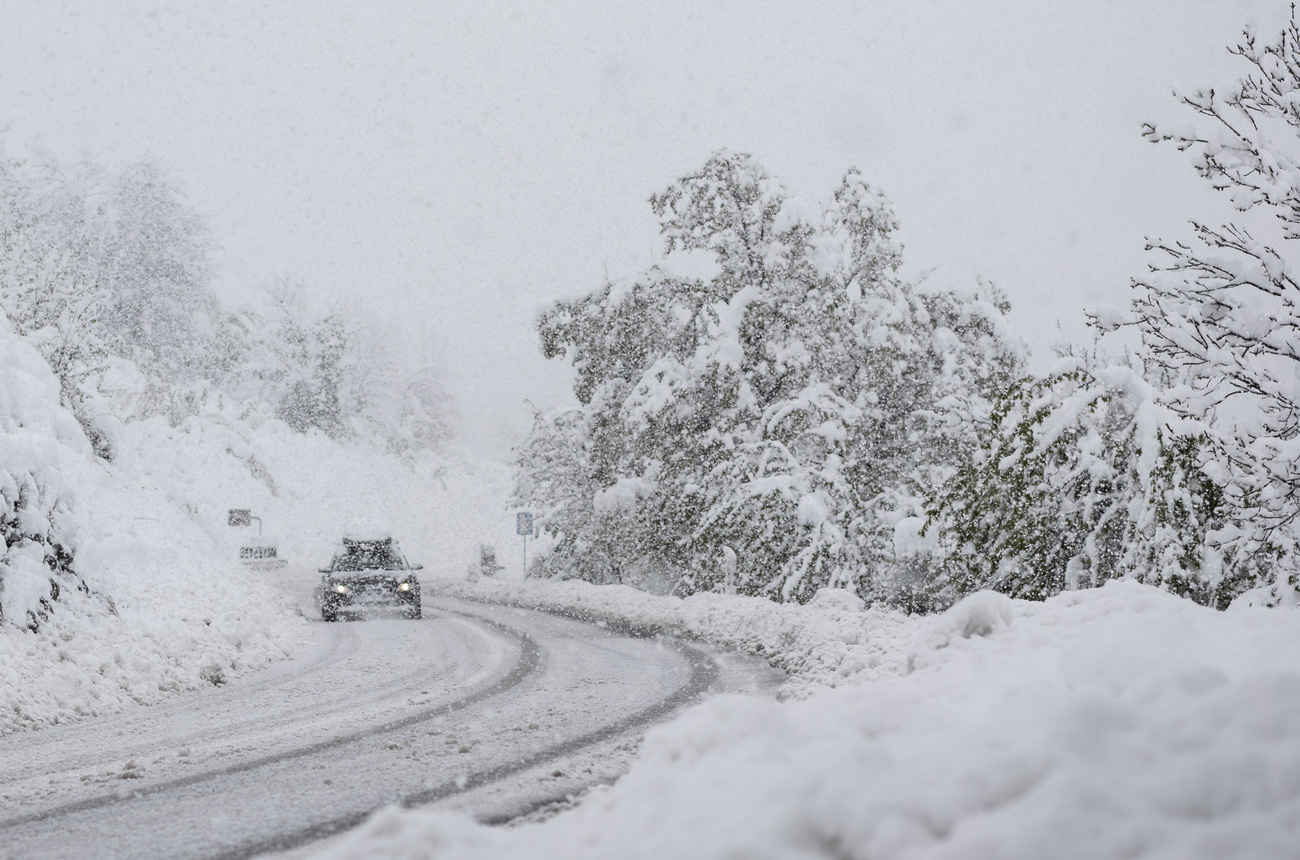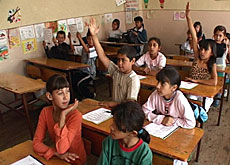“To be Roma means to be a traveller and thief”

Following the expulsion of about 1,000 Roma from France, swissinfo.ch looks at the situation of this minority group in Switzerland.
While the government has no global figure for the number of this ethnic group in Switzerland, the Rroma foundation in Zurich estimates it to be around 50,000 to 60,000.
As Cristina Kruck of the Rroma Foundation in Zurich explains, the Roma suffer from a poor image in Switzerland, as in France.
“For the Swiss, to be a Roma means to be a traveller and a thief,” she told swissinfo.ch. Kruck, who comes from Estonia, grew up in Switzerland and has worked in public relations and at the International Committee of the Red Cross.
Yet unlike the clichés, most Roma in Switzerland are well integrated and are not travellers at all, she says.
The Roma form a community of about 12 million people in Europe. But they are not the only travelling community. There are also Gitanos, Sinti and Jenisch.
Some 1,000 Roma have been returned to Romania and Bulgaria from France in the past month, and official figures record that 11,000 Roma were expelled last year.
The United Nations and parts of the international community have criticised this policy, and President Nicolas Sarkozy has also faced dissent from within his own cabinet.
Persecution
Swiss Zurich historian Thomas Huonker, who specialises in travelling communities, told swissinfo.ch that the poorest of all these groups are the Roma, who are the latest to arrive in France.
They come from countries including Slovakia, Hungary, Bulgaria and Romania and prefer living in the suburbs of Paris, Milan or Rome than in the ghettos in these eastern European countries.
“Because there, people living in extreme poverty are still the target of mob violence, influenced by the language of racist, anti-Semitic and anti-Gypsy organisations,” Huonker said.
France is currently being accused of similar behaviour by many groups in the European parliament.
The head of the Liberal group, Belgian Guy Verhofstadt, on Tuesday warned against “populist or even racist traps”, while the head of the Socialists, the German Martin Schultz branded France’s actions “a witch-hunt”.
So might the Roma community seek refuge in Switzerland after their recent expulsion?
It’s unlikely, says Huonker. “The Swiss policy towards the poor members of this European group is very similar to France’s, if a little more discreet,” he said.
“Switzerland expels beggars, rose sellers and virtuoso street musicians. The best known example is from Geneva in 2009, because then the Roma showed resistance.”
“Until now there has been no increase in Roma entering Switzerland and we are not aware of any problems.” Marie Avet of the Swiss Federal Migration Office told swissinfo.ch.
She says there is unlikely to be a rise in the number of Roma as there are “quota rules for citizens from Romania and Bulgaria who enter Switzerland, hence the number of people seeking employment here is limited”.
“These contingents apply to all citizens, irrespective of their ethnicity.
“If they enter Switzerland as tourists they are not allowed to work and must leave the country after three months.”
Well-integrated
Romas first came to Switzerland in large numbers after the Second World War. Most are well integrated, speak the national languages and have work.
Following the ethnic cleansing in Bosnia and Kosovo in the 1990s, another wave of migration began. Of the 300,000 Roma who lived in Kosovo before war broke out there, only 20,000 remain, the Rroma Foundation says.
Kruck says the Roma community is very heterogeneous.
Some Roma are doctors and own restaurants and are so well integrated the Swiss don’t even realise they are here.
“The ‘visible’ ones are the poorer ones, the “invisible” ones are those who are integrated but prefer not to say who they are,” she said.
“In Switzerland, it is better to be a ‘Yugo’ [someone from the former Yugoslavia] than a Roma, because the latter have a bad reputation.”
She explains that most Roma in Switzerland now have Swiss passports and only a small proportion are travellers.
You have to distinguish them from the Roma refugees from Kosovo, she says, those who cross the border from France and whom the Jenisch accuse of invading their territory, and the Roma from Romania, “who come to Geneva to beg for one or two days and then go away”.
Emily Wright, swissinfo.ch
The Swiss government in September 2010 signed accords with Bulgaria and Romania that opened upwards of SFr257 million ($254 million) to help reduce social and economic disparities within the European Union.
About SFr181 million will go to Romania alone. The funds, to be spread out over ten years, will be used to fight corruption, improve security, infrastructure, integration and research, among other projects.
Although not a member of the EU, Switzerland has contributed SFr1 billion for ten other mainly eastern European countries.
Roma, Sinti, Kale, Lovara, Machvaya are just some of the hundreds of nomadic groups using the Romani language, who originally came from northwestern India between the 10th and 14th centuries.
They moved in waves first towards Asia Minor and then towards North Africa and Greece, before fanning out across Europe.
Although grouped together as travellers (or more pejoratively as gypsies), these nomadic peoples are in reality very diverse, in terms of ethnic background but also in terms of language, culture and religion of the country in which they reside.
They have been persecuted and discriminated against for hundreds of years and now live on the margins of society – not through choice.
They make up the largest ethnic minority in Europe, but it is hard to gain a clear overview.
Some estimates have their numbers at 15-20 million. Most live in central western Europe, with around two million in Romania.
In Switzerland, as in the rest of Europe, travellers were considered not able to follow the values and laws of the land.
In 1906 the Swiss government decided to close the borders to travellers.
In 1926 youth organisation Pro Juventute started the Children of the Road project, supported by local and national authorities.
Children were removed from their parents and placed in children’s homes or with foster parents to take them away from a travelling lifestyle.
Around 600 children were affected between 1926-1972.
Travellers, whether living a nomadic lifestyle of not, only managed to gain legal protection accorded to minorities in the 1970s.
But this does not totally protect them against discrimination.
(Source: Nadia Bizzini, cultural mediator, canton Ticino)

In compliance with the JTI standards
More: SWI swissinfo.ch certified by the Journalism Trust Initiative












You can find an overview of ongoing debates with our journalists here . Please join us!
If you want to start a conversation about a topic raised in this article or want to report factual errors, email us at english@swissinfo.ch.